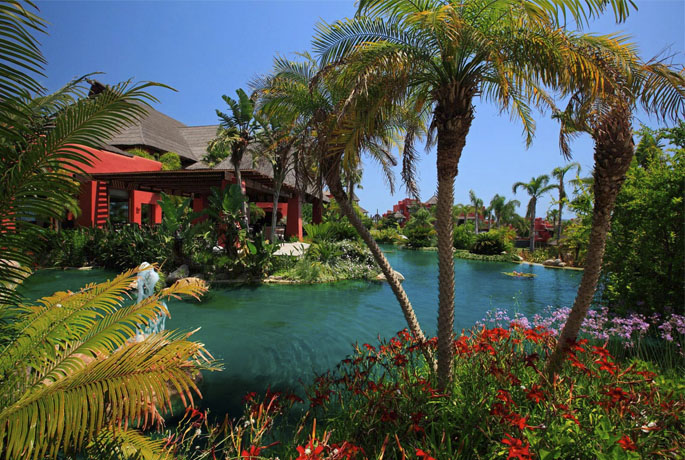Japanese gardens
Today we travel from the spectacular garden of the luxury hotel in Spain Asia Gardens Hotel & Thai Spa, to the most famous garden in Asian culture: the Japanese garden.
Japanese gardens come up from the basic need of Japanese people of being in contact with nature. You may easy find them either in private houses or historical places such as castles or Buddhist Temples and, their main purpose, is to reproduce a natural space.
They arose under the influence of the Chinese gardens. During the Heian period, the Japanese garden had its own quite basic appearance. It is improved during Kamakura, Muromachi, Momoyama and Edo periods until accomplish nowadays beauty.
Japanese gardens are filled of symbolisms and spiritual messages. There are two types of gardens: the descriptive ones, whose purpose is simulating nature; and the essential ones, which seek to show the essence of nature.
Digging in this particular landscape art we can find three main typologies: Tsukiyama or panoramic garden, a big descriptive garden with hills and artificial lakes. Hiraniwa or flat garden, it is always linked to chaniwa or tea garden and to kare sansui or zen garden. Zen gardens are the most famous ones around the world. The last but not the least is the Tsuboniwa or indoor garden, which is located inside the house.
There are several iconic elements that you will always find in these delicate gardens: rocks, water, sand or gravel, decorative elements such as stone lanterns or statues, different vegetal and animals, and a teahouse. Every element in the Japanese garden has a specific meaning.
The connection between a man and his garden is considered very important for the Japanese population.
If you would like to contemplate the beauty of Asian nature, we invite you to come and wander through our tropical gardens at our 5 star resort in Spain Asia Gardens Hotel & Thai Spa, you will instantly feel the nature vibe!



